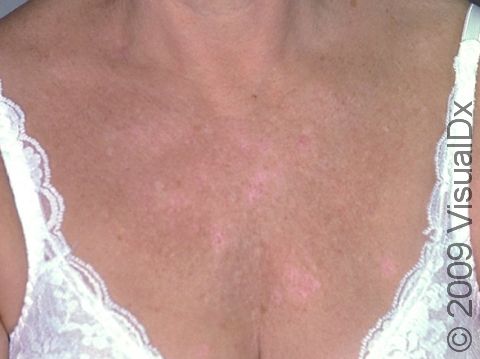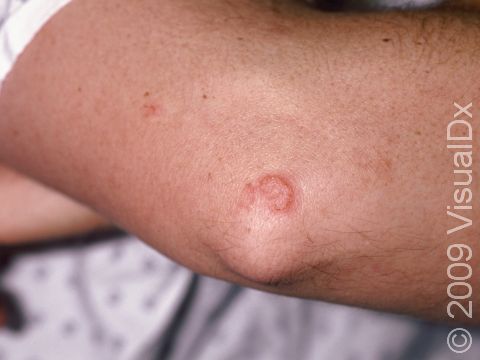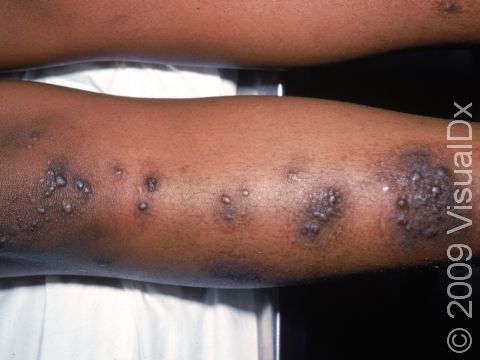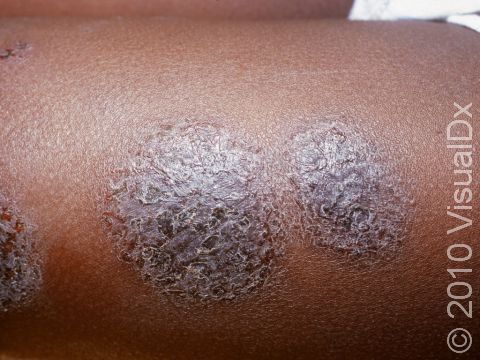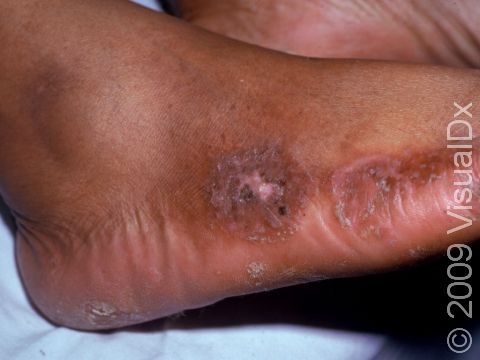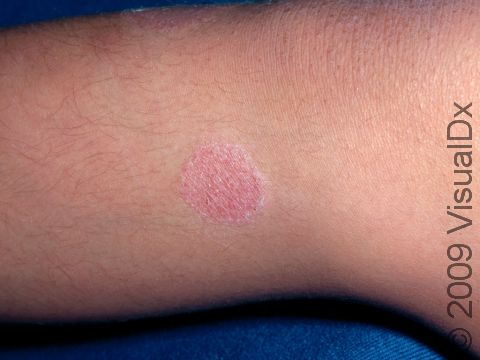Nummular Dermatitis
Nummular dermatitis is a particular form of eczema (atopic dermatitis) characterized by coin-shaped, raised areas on the skin that are scaly.
- The cause of nummular dermatitis is not known, but it is associated with triggers such as frequent bathing, irritating and drying soaps, and exposure to irritating fabrics such as wool.
- Those with nummular dermatitis often have some of the signs and symptoms typically associated with eczema.
- Nummular dermatitis is itchy (pruritic), but it is less itchy than other common diagnoses with scaly plaques, such as psoriasis.
- Winter is usually the time of onset and severity.
- Nummular dermatitis can be chronic, and symptoms can go away and recur indefinitely.
Who's At Risk?
Nummular dermatitis may affect people of all ages.
Signs & Symptoms
Nummular dermatitis is most commonly found on the trunk and/or extremities. Round or coin-shaped, pink to red, scaly, raised areas are seen, often with small cracks or superficial breaks in the skin located within.
Self-Care Guidelines
Maintaining healthy skin is very important for sufferers of nummular dermatitis.
- Moisturizing skin-care routines are essential.
- Non-soap cleansers, such as Cetaphil®, or moisturizing soaps, such as Dove®, are recommended.
- Thick moisturizers such as petroleum jelly, Aquaphor® ointment, Eucerin® cream, CeraVe™ cream, and Cetaphil® cream should be applied to damp skin daily after bathing.
- Attempt to minimize exposure to heat, humidity, detergents/soaps, abrasive clothing, chemicals, smoke, and stress.
- Fragrance-free laundry detergent may be beneficial.
- Keep the home humid with a humidifier or setting out bowls of water, especially in the bedroom.
Treatments
Your physician may:
- Prescribe medium- to high-potency topical steroids to apply to the affected areas twice daily.
- Recommend light therapy with ultraviolet B for extensive disease.
- Prescribe oral antihistamines to help relieve itching.
- Prescribe oral or topical antibiotics if the area becomes infected.
Visit Urgency
You should seek medical care if there is a lack of response to self-care measures or the condition worsens or flares.
Trusted Links
References
Bolognia, Jean L., ed. Dermatology, pp.218-223. New York: Mosby, 2003.
Freedberg, Irwin M., ed. Fitzpatrick’s Dermatology in General Medicine. 6th ed, pp.1194-1196. New York: McGraw-Hill, 2003.
Last modified on October 5th, 2022 at 7:43 pm

Not sure what to look for?
Try our new Rash and Skin Condition Finder
